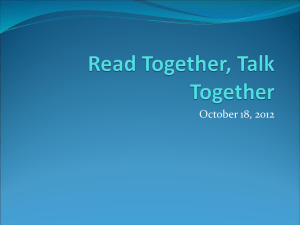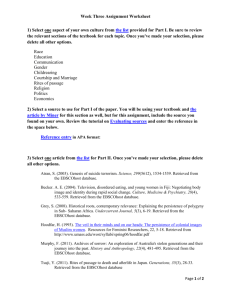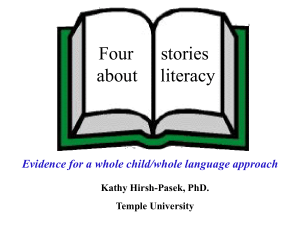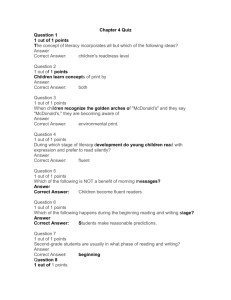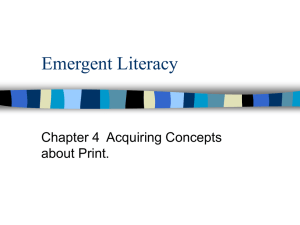Literature Review References
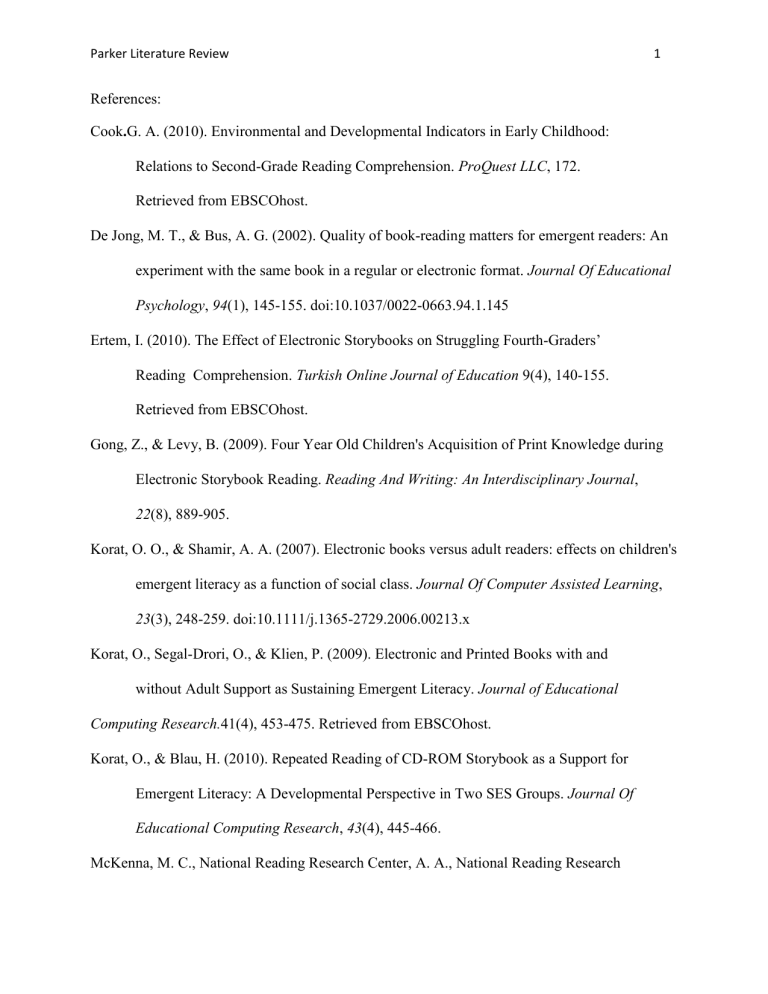
Parker Literature Review 1
References:
Cook .
G. A. (2010). Environmental and Developmental Indicators in Early Childhood:
Relations to Second-Grade Reading Comprehension. ProQuest LLC , 172.
Retrieved from EBSCOhost.
De Jong, M. T., & Bus, A. G. (2002). Quality of book-reading matters for emergent readers: An experiment with the same book in a regular or electronic format. Journal Of Educational
Psychology , 94 (1), 145-155. doi:10.1037/0022-0663.94.1.145
Ertem, I. (2010). The Effect of Electronic Storybooks on Struggling Fourth-Graders’
Reading Comprehension. Turkish Online Journal of Education 9(4), 140-155.
Retrieved from EBSCOhost.
Gong, Z., & Levy, B. (2009). Four Year Old Children's Acquisition of Print Knowledge during
Electronic Storybook Reading. Reading And Writing: An Interdisciplinary Journal ,
22 (8), 889-905.
Korat, O. O., & Shamir, A. A. (2007). Electronic books versus adult readers: effects on children's emergent literacy as a function of social class. Journal Of Computer Assisted Learning ,
23 (3), 248-259. doi:10.1111/j.1365-2729.2006.00213.x
Korat, O., Segal-Drori, O., & Klien, P. (2009). Electronic and Printed Books with and without Adult Support as Sustaining Emergent Literacy. Journal of Educational
Computing Research.
41(4), 453-475. Retrieved from EBSCOhost.
Korat, O., & Blau, H. (2010). Repeated Reading of CD-ROM Storybook as a Support for
Emergent Literacy: A Developmental Perspective in Two SES Groups. Journal Of
Educational Computing Research , 43 (4), 445-466.
McKenna, M. C., National Reading Research Center, A. A., National Reading Research
Parker Literature Review 2
Center, C. D., & And, O. (1996). Using Electronic Storybooks with Beginning
Readers. Instructional Resource No. 39 . Retrieved from EBSCO host .
Moody, A. K. (2010). Using Electronic Books in the Classroom to Enhance Emergent Literacy
Skills in Young Children. Journal Of Literacy & Technology , 11 (4), 22-52.
Shamir, A. (2009). Processes and outcomes of joint activity with e-books for promoting kindergarteners' emergent literacy. Educational Media International , 46 (1), 81-96. doi:10.1080/09523980902781295

